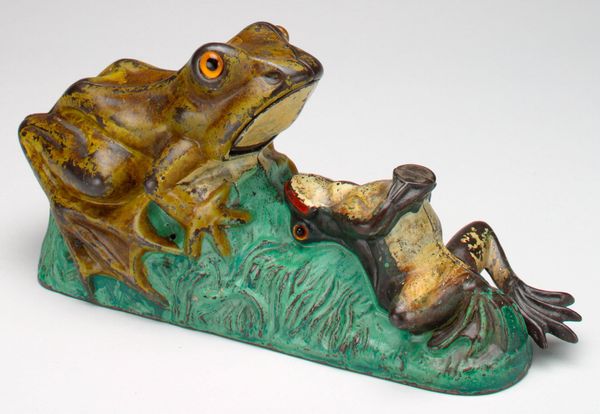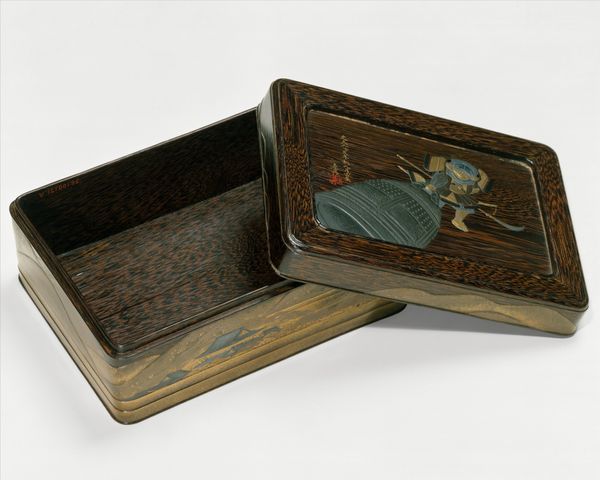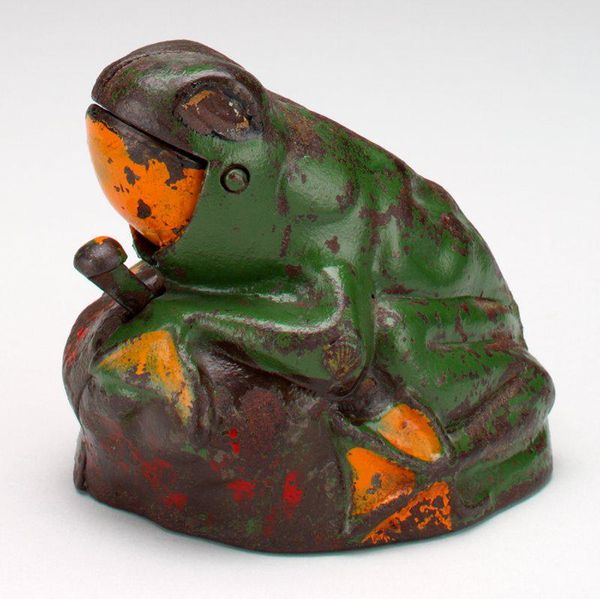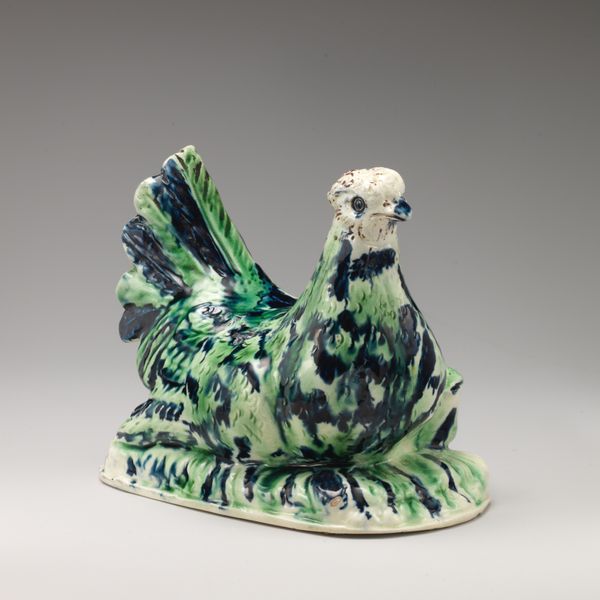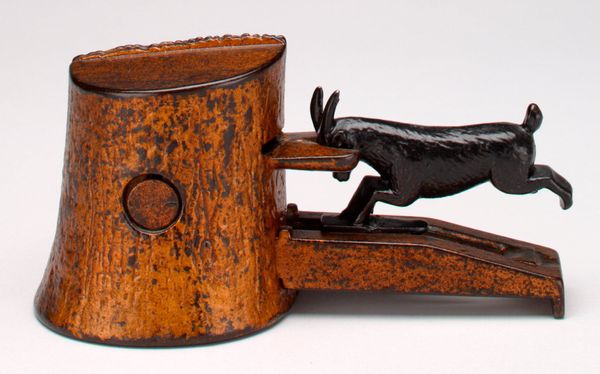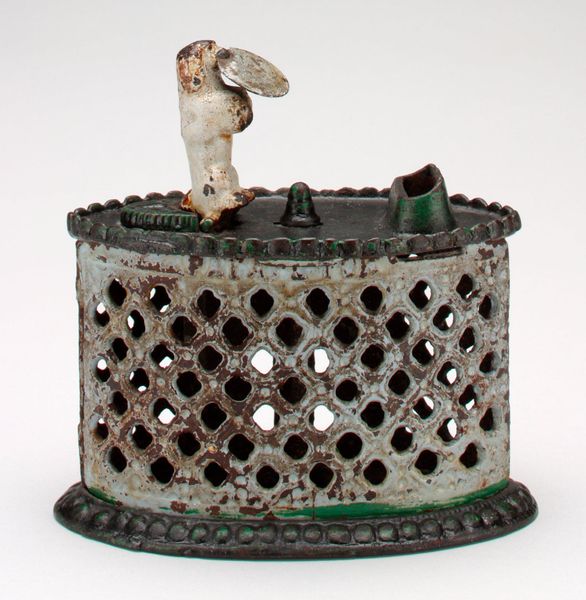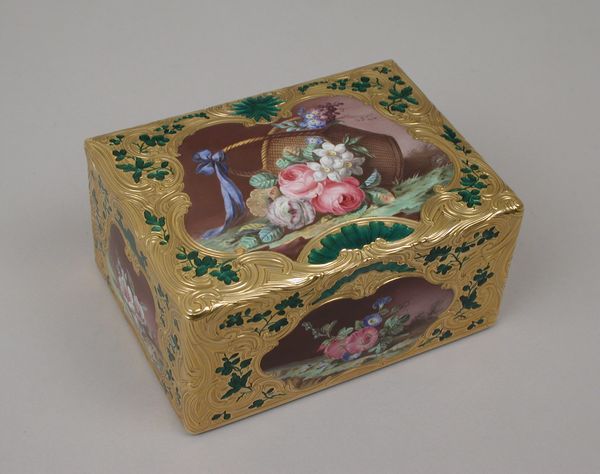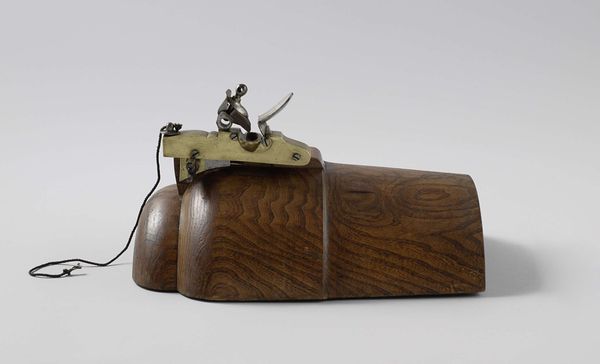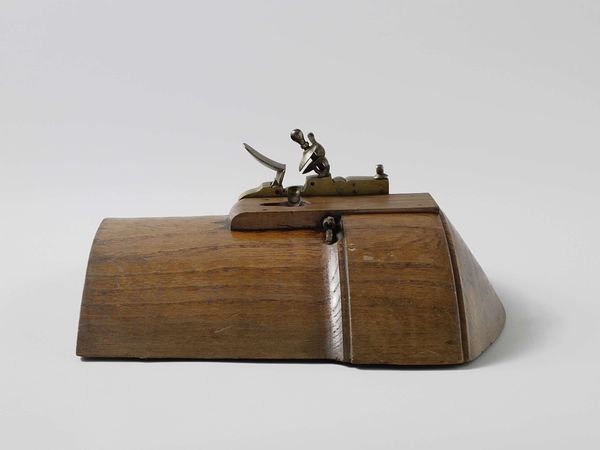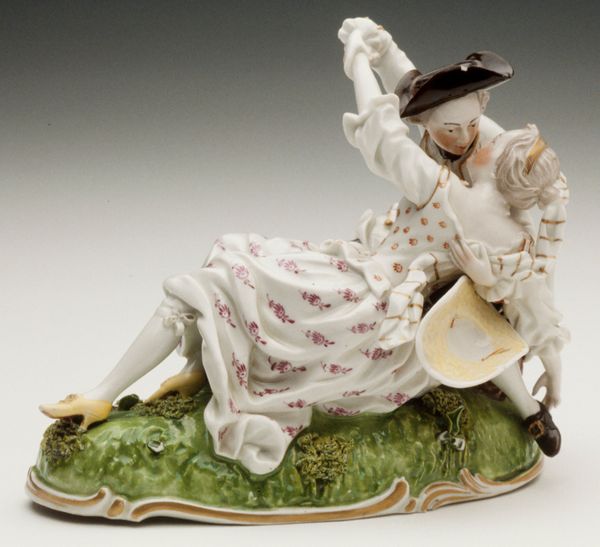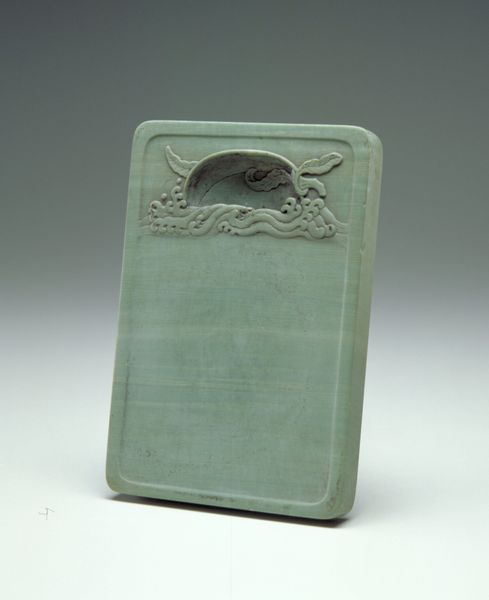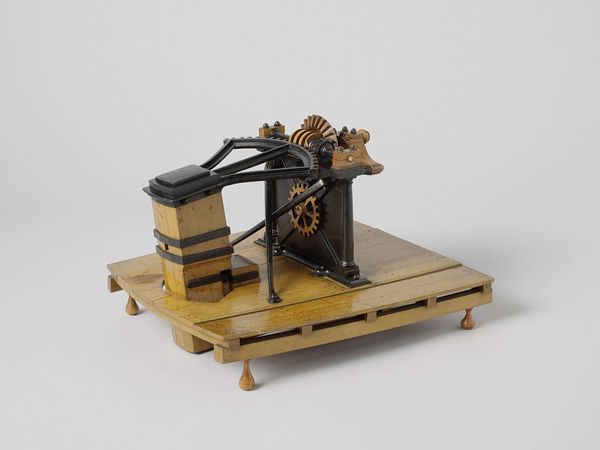
mixed-media, metal
#
product photograph merchandise
#
product studio photography
#
mixed-media
#
germany
#
metal
#
product fashion photography
#
landscape
#
figuration
Dimensions: 3 5/8 x 5 1/4 x 2 9/16 in. (9.21 x 13.34 x 6.51 cm)
Copyright: Public Domain
Editor: So, this mixed-media piece is called "-Snake and Frog in Pond- mechanical bank," dating from around 1910-1920. It seems to be primarily metal. What strikes me is the kind of playful use of craft in something so explicitly commercial. What's your take on this work? Curator: I see a fascinating intersection of labor, materiality, and consumption. We're looking at a mass-produced object designed for childhood, a time of life not usually considered worthy of complex cultural output. Consider the layers of labor involved: from mining the metal, to the lithographic printing, the assembly. Editor: Right, it’s easy to forget all the steps, especially since it looks like a toy. How does its function influence our interpretation? Curator: Its function as a bank is key. It encouraged children to participate in a system of capital accumulation, masking this potentially alienating concept with charming, handmade-looking aesthetics. Does the visual appeal distract us from the labor process involved, or does the overt display of materiality, like the exposed metal, make it all the more complex? Editor: That’s a great point! The folksy images on the bank seem to idealize nature while hiding its extraction. What can we make of that? Curator: Exactly! Consider its production context – Germany in the early 20th century. This was a period of immense industrial growth and societal transformation. A mechanical bank becomes more than just a toy. It embodies the era's values, its anxieties about labor, and the commodification of everything. Editor: Wow, seeing it that way, it really unpacks a lot about its time. I never thought about a simple toy having that much going on behind the scenes. Curator: Absolutely. This humble object reminds us that even the most everyday items can be rich sources of cultural information when viewed through the lens of materiality and production.
Comments
No comments
Be the first to comment and join the conversation on the ultimate creative platform.
